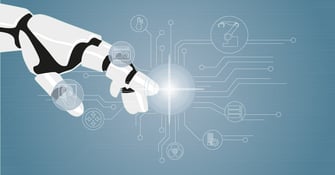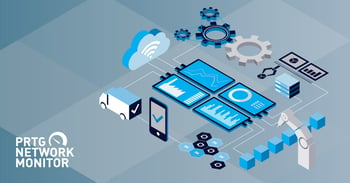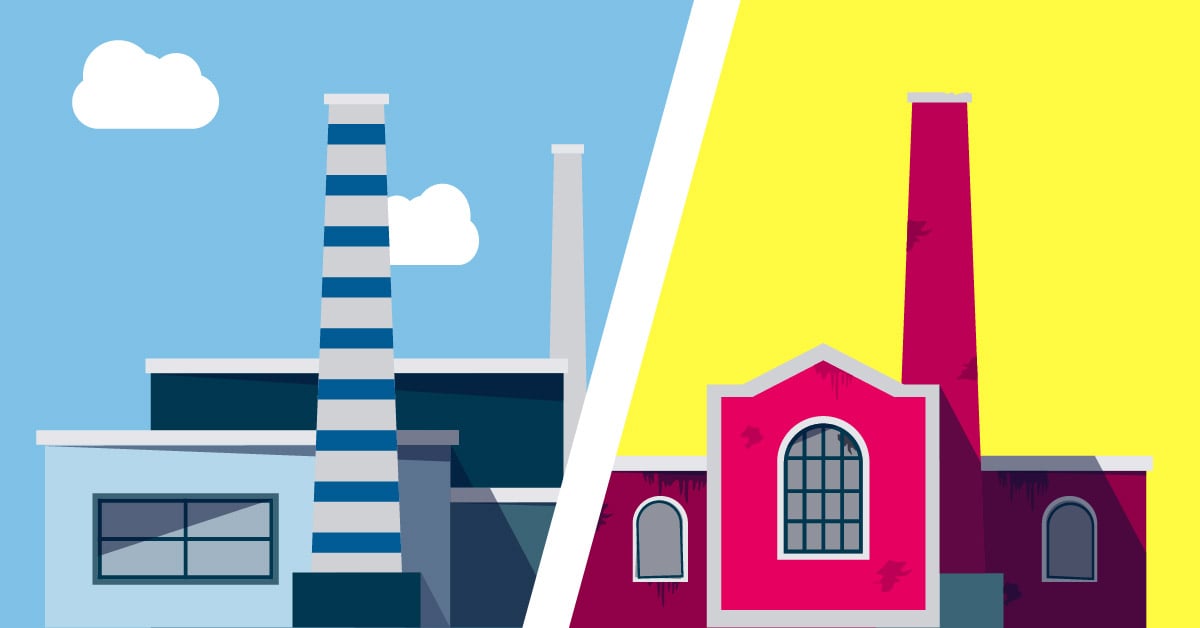Digitalization and automation of manufacturing processes in recent years have driven the convergence of IT and OT. One of the biggest advantages of this is new ways to aggregate data. New technologies and concepts like the IIoT and analytics, among other things, allow for the collection and analysis of more data than ever before. This in turn drives decision-making and other concepts like preventive and predictive maintenance.
However, many machines and devices on the factory floor are too old to support these new data collection scenarios; they simply do not provide the right connectivity, data interfaces, or data points that are required.
This is where retrofitting comes in. Retrofitting, or brownfield transformation as it is also known, refers to giving new life to old machines. Think of it as giving a “dumb” machine “smart” capabilities by increasing its connectivity. A common way this is done is by fitting IIoT sensors to old machines, thus allowing crucial data about the status, condition, operation and more to be collected and sent to other systems for processing.
Steps toward retrofitting
Generally speaking, there are five main steps you will need to consider if you want to retrofit your industrial environment.
1. Define your goals and KPIs
How you retrofit your environment depends on your business goals, because these will define what data you need from your factory floor. For example: if your goal is to reduce downtime of certain machines, you need to keep constant track of the operating status of those machines. If you need to ensure that humidity or temperature levels do not exceed certain values, then you will need to implement environmental sensors. Once you know the KPIs, you can start with your retrofitting strategy.
2. Take inventory: do you already have the data you need?
In this step, you need to get to know your industrial IT architecture very well. What existing data can you already get from your machines or systems like SCADA, HMI and MES? What protocols do they use to communicate? What connectivity is already available? Does the environment already make use of industrial gateways, which are key interfaces between the OT world, IIoT devices, and upstream systems? Once you know the answers to questions like these, it will become clear where the gaps are – and where you need to implement new sensors or interfaces.
3. Examine the infrastructure
 Retrofitting involves adding new machines, sensors, gateways and other communicators to the industrial network, so you need to know what your current network infrastructure can handle. This means knowing the capability of your current industrial networking hardware like routers and switches, as well as checking on the bandwidth limitations you have. In addition to this, you will be adding IIoT sensors and industrial gateways to the environment, and so you need to ensure that your infrastructure can handle the new demands that will be placed on it.
Retrofitting involves adding new machines, sensors, gateways and other communicators to the industrial network, so you need to know what your current network infrastructure can handle. This means knowing the capability of your current industrial networking hardware like routers and switches, as well as checking on the bandwidth limitations you have. In addition to this, you will be adding IIoT sensors and industrial gateways to the environment, and so you need to ensure that your infrastructure can handle the new demands that will be placed on it.
4. Processing and analyzing data
The data from the factory floor will need to be sent to other systems, such as data centers in the cloud or on-premises, where it can be analyzed to generate insights and inform decisions made about all aspects of the production process. And of course, the data has several touchpoints to travel through along the way: routers, switches, industrial gateways, and systems like MES and Cloud ERP systems are all possible steps.
5. Putting a monitoring strategy in place.
Because of the complexity of the points mentioned above, monitoring the environment is crucial. You need to understand so much about the IT and OT infrastructure – the condition and status of machines on your factory floor, the status of industrial gateways, bandwidth usage, and the status of IIoT devices, to name just a few metrics. In addition to this, you need to measure the KPIs that were defined in the first step. For this, you need a monitoring tool that is able to bring in data from IIoT sensors, OT systems, and traditional IT components using several common protocols and display everything in one place.
PRTG in industrial environments
 PRTG monitoring software is a good fit for retrofitted environments, specifically because of its versatility: it is vendor agnostic, it can collect data from various sources using common OT protocols and standards like OPC UA and Modbus TCP, it can monitor the status of industrial gateways and OT systems, and it has functionality to monitor IIoT sensors and devices. You can also use PRTG to assign threshold values for different metrics and get alerts when they are exceeded. And, using customer PRTG dashboards, you can ensure that teams get the data they need to make decisions and keep things running.
PRTG monitoring software is a good fit for retrofitted environments, specifically because of its versatility: it is vendor agnostic, it can collect data from various sources using common OT protocols and standards like OPC UA and Modbus TCP, it can monitor the status of industrial gateways and OT systems, and it has functionality to monitor IIoT sensors and devices. You can also use PRTG to assign threshold values for different metrics and get alerts when they are exceeded. And, using customer PRTG dashboards, you can ensure that teams get the data they need to make decisions and keep things running.
Are you considering retrofitting in your environment? What challenges are you facing? Leave your comments below!
 Published by
Published by 












